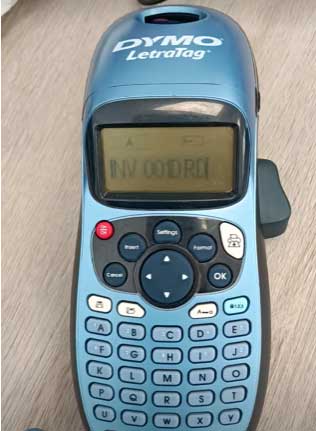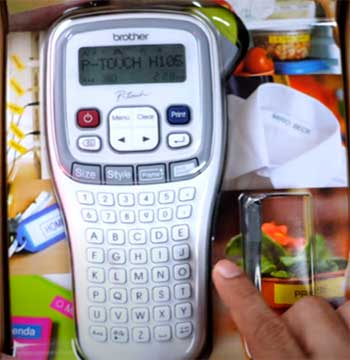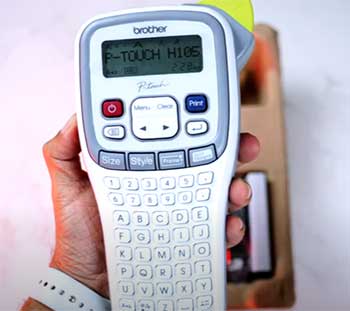When it comes to label makers, two big names stand out – Dymo and Brother. Both companies make a wide range of label printers and labelers for home, office, and industrial use. But which brand is better for your specific needs?
In this comprehensive guide, we’ll compare Dymo and Brother label makers across several factors:
- Ease of use
- Print quality
- Label durability
- Software and connectivity
- Cost and value
- Range of label sizes and materials
- Extra features
We’ll also provide an overview of some of the most popular Dymo and Brother models to help you choose the right label maker for your requirements and budget.
A Brief Comparison Table
| Feature | Dymo | Brother |
| Ease of Use | Very simple interface, minimal buttons | Slightly busier interface less intuitive for beginners |
| Print Quality | Up to 360 dpi resolution, very sharp text and graphics | Max 200 dpi, legible but not as crisp detail |
| Label Durability | Extremely durable, years of indoor/outdoor use | Also highly durable and water/UV resistant |
| Software | DYMO ID label design software included | P-Touch Editor software included |
| Connectivity | USB, Wi-Fi, Bluetooth on higher-end models | USB, Wi-Fi, Bluetooth, NFC on some models |
| Cost | $20 – $500+, pricier but excellent value | $30 – $350+, very affordable for home use |
| Label Sizes | Extensive range from 3mm – 50mm widths | Good range but fewer size options |
| Extra Features | Advanced features like color displays, preview screens, voice control | Useful conveniences like tilt sensors and document printing |
Comparison of Dymo And Brother Label Makers
- Ease of Use

Both Dymo and Brother labelers are designed to be user-friendly, even for those who aren’t tech savvy.
Dymo label makers tend to have simpler interfaces with minimal buttons and intuitive menus.
Many models have automatic label feeders and cutters that make printing and applying labels nearly effortless.
The black text on white LCD displays provide good visibility.
Brother labelers also aim for simplicity but the slightly busier interfaces may seem less intuitive to first-time users.
However, the screen displays are crisp and clear. Plus, features like automatic tape cutters add convenience.
When it comes to ease of use, Dymo wins out slightly thanks to very straightforward design. But Brother labelers aren’t far behind.
- Print Quality
Print quality is another important consideration when choosing a label maker. You want legible, professional-looking text and graphics on your labels.
Dymo label printers deliver excellent print quality for the price. The thermal printing technology provides sharp, easy-to-read black text without any ink smudging. Print resolution ranges from 203 dpi on lower cost models to 360 dpi on pricier label makers.
Brother also utilizes thermal printing but most models max out at around 200 dpi print resolution. The end result is perfectly legible text but fine details may not be as sharp as Dymo labels, especially on small or intricate barcodes.
If print quality is your top priority, Dymo labelers are the better choice. But for general office and home use, Brother offers solid print results too.
- Label Durability
You want labels that can withstand wear and tear, especially if they’ll be applied to surfaces outdoors or exposed to moisture and sunlight. So durability is key.
Dymo is renowned for its long-lasting thermal print technology. The printed text and graphics are heat-infused directly onto the label material so they hold up very well to abrasion, moisture, UV light and other environmental factors.
Even industrial-grade Dymo labels maintain their legibility for years.
Similarly, Brother labels stand up to water, chemicals, heat, and sunlight. As long as you choose the appropriate label material for your application, Brother labels have excellent long-term durability too.
When it comes to lasting label quality, it’s a draw between these two brands. Both offer superb durability for a wide array of uses.
- Software and Connectivity

The software and connectivity features compatible with a label maker also affect its convenience and functionality.
Many Dymo labelers can be used standalone without a computer.
However, you can download the DYMO ID software for advanced label design and organizing uploaded images and files.
Labels can be printed directly from programs like Excel too. Most Dymo models connect to computers via USB or wireless.
For Brother label makers, the P-Touch Editor software widens design capabilities and integrates with Microsoft Office. Brother’s online applications allow creating labels on internet-connected mobile devices. Connectivity options include USB, Wi-Fi, Bluetooth, and NFC.
Dymo offers a larger variety of connection choices on more models. But Brother also covers the key options. Both provide practical software too. This round is a tie.
- Cost and Value
Of course, price plays a role too when shopping for label makers. Which brand offers better value for money?
Dymo labelers range from around $20 for basic handheld models to over $500 for industrial label printers. Given the exceptional ease of use, print quality, and durability, Dymo products warrant their price tags. The cost reflects the outstanding functionality and longevity.
Brother label makers have a similar pricing spectrum, from about $30 for pared-down models to $350+ for commercial-use printers. For comparable prices, Brother machines don’t have quite the same depth of features and construction.
But they still represent solid value, especially for lower volume home and office users.
Dymo emerges as the winner for value, providing rugged construction and versatile features that merit the price premium over Brother. But budget-conscious shoppers may find capable Brother models too.
- Range of Label Sizes and Materials
The scope of compatible label sizes and materials is another variable to weigh. Wider support adds flexibility.
Dymo label makers support an expansive range of tape widths from just 3 mm for tiny wires and components up to 50 mm for warehouse racks and boxes. Label materials span basic paper to specialty polyester, foil, and metal tapes.
Brother doesn’t offer quite the same extensive tape compatibility. But key options like 6, 9, 12, 18, 24, and 36 mm widths are covered. And common materials like vinyl, fabric iron-on and high-temperature labels can be printed too.
With more size and material choices, Dymo wins this round. But Brother still handles most everyday labeling tasks.
- Extra Features

Convenience features like rechargeable batteries, label preview screens, and specialized connectivity can also sway decisions.
Higher-end Dymo labelers really pack in the features: fast rechargeable lithium batteries, color displays, label design preview, Wi-Fi and Bluetooth connections, even voice recognition.
But mid-range and budget models have limited extras.
Brother printers offer worthwhile conveniences like tilt sensors, document printing, and NFC tap-to-connect at lower price points than Dymo. Key extras like battery power and preview screens are reserved for pricier models though.
For premium features on an industrial-level label printer, Dymo is the clear winner. But for occasional home office users, Brother provides greater feature value at more budget-friendly pricing.
Popular Label Maker Models Compared
Now that we’ve compared the Dymo and Brother brands overall, let’s stack up some of their most popular label maker models head-to-head.
DYMO LabelManager 160 vs Brother P-Touch PT-D210
These mid-priced models both offer:
- LCD displays
- QWERTY keyboards
- Automatic cutters
- Rechargeable batteries
- USB connectivity
The LabelManager 160 edges out the PT-D210 with wider label compatibility, preview screen, and slightly better print quality. But the Brother model is more compact.
DYMO LabelWriter 450 Turbo vs Brother P-Touch PT-E300
Moving up to these higher-end thermal printers, notable features include:
- 300+ dpi print resolution
- Fast print speeds
- Wired and wireless connectivity
- Durable metal exteriors
The LabelWriter 450 Turbo justifies its higher cost with wider platform support, Wi-Fi/Ethernet networking, and premium construction. But the PT-E300 still impresses for the price.
DYMO Rhino 6000 vs Brother P-Touch PT-E850T
These industrial-grade label printers deliver:
- Commercial-grade print speeds
- Durable metal housings
- Advanced label design software
- Large touchscreens
The Rhino 6000 is built like a tank and offers expansive label compatibility. But for most applications, the PT-E850T is comparably robust while costing significantly less.
As you can see, choosing between comparable Dymo and Brother label printer models depends on your specific feature needs and budget. Dymo machines justify higher prices but Brother offers capable lower-cost alternatives.
Frequently Asked Questions (FAQ)
Dymo label makers are generally easier to use, offer better print quality, work with more label materials, and have more premium features. So for demanding professional applications, Dymo is the better choice. However, Brother makes quality labelers at more budget-friendly prices that are excellent for light office and household use.
For home and occasional office use, the Brother P-Touch PT-D210 provides excellent value at around $50. It prints high-quality labels up to 24 mm wide, has convenient features like a cutter and rechargeable battery, connects via USB, and even includes some starter tape.
If you need an industrial-strength label printer, the top choice is the Dymo Rhino 6000. It powers through large print jobs quickly and reliably, works with a huge variety of label sizes and materials, withstands heavy usage, and has an expansive feature set. But it’s overkill for household use. The Brother P-Touch PT-D210 is the best label maker for typical home needs.
The DYMO LabelWriter 280 and Brother P-Touch PT-E300 are both mid-range thermal label printers but have some key differences. The Dymo 280 prints faster, up to 110 labels per minute, offers Wi-Fi networking, and has a more durable metal case. But the Brother PT-E300 can print multi-line labels and documents, has NFC tap-to-connect, and costs around $50 less.
Wrapping Up
When choosing between industry-leading label maker brands Dymo and Brother, there’s no one-size-fits-all winner.
Dymo labelers tend to edge out Brother in areas like ease of use, print quality, label durability, and breadth of compatible tape sizes and materials. You’ll pay more but get premium performance and longevity.
However, Brother label makers offer surprisingly robust functionality considering their lower costs. For occasional home and office use, Brother models provide reliable operation without breaking the bank.
Think about where you’ll use your label maker and how much. If you’ll print high volumes in demanding environments, spring for a heavy-duty Dymo. But for lighter household and office uses, an affordable Brother will do the job admirably.
Within those guidelines, also consider connectivity options, convenience features, and design software compatibility for your work environment. And be sure to choose a model that supports the necessary label widths and materials for your specific labeling needs.
By weighing all these factors against your budget, you’re sure to find a Dymo or Brother label printer that ticks all your boxes! Properly matched to your requirements, both brands deliver outstanding performance and value.

Great info. I have a collection of DYMO and Brother label printers ( pr of H100s, PT 80, PT 1900) that I found at various thrift shops. I find it sometimes cheaper to go this route as the cost is less than new tapes. The H100s are my go to as I have used them the longest. As I understand it, all are thermal printers. As such the actual tape/ribbon SHOULD basically the same, (In theory). I have some DYMO Rhino 20552, and Brother TC-101, & M tape cassettes. DYMO site says that Rhino will “fit” some LetraTag (which my H100s use). I am thinking about “hacking” the tapes. Allowing for size and capacities, I would like to remove the guts from the cassettes and put them into the now empty Letra Tag cassettes from the H100’s. Another option would be to put the tapes from the TC-101s into the empty M tape cassettes for use in the Ptouch 80 (which I have not used yet, No manual and I haven’t tried to find one on line yet. I tried this with another cassette before but it did not work. I think that it used a separate “ink” tape. It also may have been from a non-thermal printer. The LetraTag cassette do not appear to use a dual tape system as I have found no trace of an empty spool. Just wondering about you thoughts or the logic of my ideas. Also, how do the P-80 & 1900 standup? I did not see anything in your article about them. I do understand that there are too many models for you to rate (due to time and space restrictions). Thanks for listening to an old man ramble.